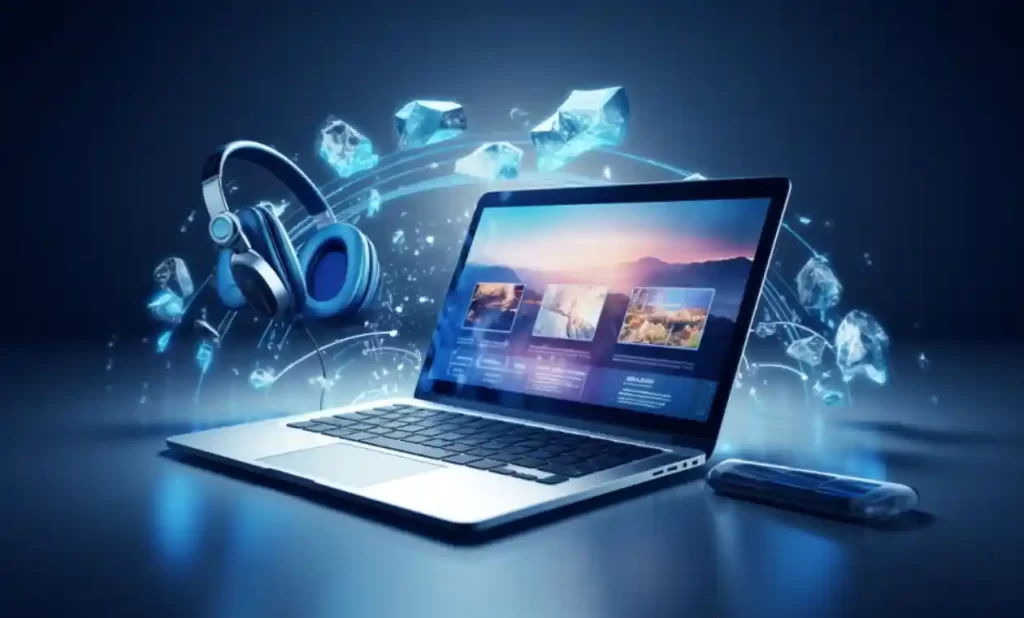
In the fast-paced digital age, technology has woven itself into the very fabric of our lives. Our smartphones, laptops, tablets, and other tech gadgets are not just tools; they are repositories of our personal data, access points to our digital lives, and gateways to the virtual world. In this ever-connected existence, the importance of tech safety cannot be overstated.
This comprehensive guide is your shield against the myriad threats that your technologynology can face, both in the physical world and the vast landscape of the internet. Here, you will find a collection of safety tips to help you protect your tech from harm and keep your digital world secure.
From safeguarding your devices against physical accidents to fortifying your online presence against cyber threats, we’ve got you covered. We will navigate through safe handling, traveling with tech, securing your online accounts, and protecting your privacy on social media. Furthermore, we’ll delve into the digital tools and strategies you can employ to keep your data safe and ensure your tech serves you without interruptions.
Join us on this journey as we explore the multifaceted domain of tech safety. By the time you reach the end of this guide, you’ll be equipped with the knowledge and practices to safeguard your tech in an increasingly interconnected world. Your digital well-being is in your hands, and this guide is your map to safer tech usage.
Let’s dive into the world of tech safety and ensure that your devices and data remain protected and your digital life stays secure.
What is Cybersecurity?
Cybersecurity, short for “cybersecurity technology” or “computer security,” is a multidisciplinary field dedicated to protecting information, systems, networks, and programs from digital attacks, damage, or unauthorized access. With the increasing reliance on digital technology in various aspects of our lives, including business, communication, healthcare, finance, and more, the importance of cybersecurity has grown significantly.
Key Components of Cybersecurity
Information Security
- Confidentiality: Ensuring that information is accessible only to those authorized to access it.
- Integrity: Protecting the accuracy and reliability of data and information.
- Availability: Ensuring that information and systems are available and accessible when needed.
Network Security
- Firewalls: Network security devices that monitor and control incoming and outgoing network traffic based on predetermined security rules.
- Intrusion Detection and Prevention Systems (IDPS): Tools that monitor network and/or system activities for malicious exploits or security policy violations.
Application Security
- Secure Coding Practices: Ensuring that software applications are developed with security in mind to prevent vulnerabilities.
- Web Application Firewalls (WAF): A security device that protects web applications from various attacks, such as cross-site scripting (XSS) and SQL injection.
Endpoint Security
- Antivirus/Anti-malware Software: Protecting individual devices (endpoints) from malicious software.
- Mobile Device Management (MDM): Managing and securing mobile devices in an organization.
Cloud Security
- Cloud Access Security Brokers (CASB): Tools that provide security when data is transferred between on-premises devices and the cloud.
- Identity and Access Management (IAM): Controlling and managing access to cloud resources.
Cryptography
- Encryption: Converting information into a code to prevent unauthorized access.
- Public Key Infrastructure (PKI): Managing digital keys and certificates.
Incident Response and Management
- Developing and implementing plans to respond to and recover from security incidents.
Security Awareness and Training
- Educating employees and users about security best practices to reduce the risk of human error.
Governance, Risk, and Compliance (GRC)
- Establishing policies, assessing risks, and ensuring compliance with regulations and standards.
Threat Intelligence
- Collecting and analyzing information to understand and mitigate potential cyber threats.
Cybersecurity Threats
- Malware: Software designed to harm or exploit systems, such as viruses, worms, and ransomware.
- Phishing: Attempts to trick individuals into providing sensitive information by pretending to be a trustworthy entity.
- Denial of Service (DoS) Attacks: Overwhelming a system or network with excessive traffic, causing it to become unavailable.
- Man-in-the-Middle (MitM) Attacks: Intercepting and potentially altering communication between two parties without their knowledge.
- Zero-Day Exploits: Attacks that target vulnerabilities in software before a patch or fix is available.
Continuous advancements in technology and the evolving threat landscape necessitate ongoing efforts to stay ahead of potential risks. Cybersecurity professionals play a crucial role in developing and implementing strategies to protect digital assets and ensure the confidentiality, integrity, and availability of information in an increasingly interconnected world.
Internet Safety For Kids
Internet safety for kids is crucial in today’s digital age. Parents and caregivers must educate children about responsible online behavior to ensure a positive and secure online experience. Here are key guidelines:
- Educate about Online Risks: Teach children about potential online dangers, including cyberbullying, inappropriate content, and the importance of protecting personal information.
- Set Ground Rules: Establish clear guidelines for screen time and appropriate online activities. Encourage a healthy balance between online and offline activities.
- Use Parental Controls: Implement parental control settings on devices to restrict access to age-appropriate content and monitor online activities.
- Teach Privacy Awareness: Emphasize the importance of not sharing personal information, such as full names, addresses, school names, or contact details, with strangers online.
- Encourage Open Communication: Foster an environment where children feel comfortable discussing their online experiences, concerns, or encounters. Regularly check in on their online activities.
- Promote Critical Thinking: Teach kids to question the credibility of online information and think critically before clicking on links or sharing information.
- Respect Others: Instill values of kindness and respect online. Teach kids not to engage in cyberbullying and to report any incidents they encounter.
- Monitor Social Media Use: If children use social media, be aware of their accounts, friends, and posts. Discuss the potential consequences of sharing inappropriate content.
- Stay Informed: Stay updated on the latest online trends, apps, and games to better understand your child’s online world and potential risks.
- Lead by Example: Demonstrate responsible online behavior. Children often learn by observing, so modeling positive online habits is essential.
By incorporating these strategies, parents can help create a safe and secure online environment for their children, promoting responsible digital citizenship from an early age.
Physical Safety
A digital device’s physical safety is often overlooked, but it’s just as critical as safeguarding your data. Whether it’s your smartphone, laptop, or camera, protecting these valuable gadgets from physical damage is essential.
Using Protective Cases
- Protective cases act as a first line of defense for your devices. We’ll explore the importance of using cases tailored to your device’s size and shape. From heavy-duty, rugged cases for outdoor adventures to sleek, stylish cases for urban settings, we’ll cover the options that best suit your needs.
- We’ll also delve into the world of screen protectors and how they can shield your device’s most vulnerable part—the screen. This includes options like tempered glass protectors and film protectors.
Proper Handling and Storage
- Proper handling and storage are key aspects of ensuring your tech remains physically intact. You’ll find guidelines on how to handle your devices with care to avoid accidents.
- Storage considerations include safekeeping at home and when you’re on the move. We’ll discuss methods to prevent drops, bumps, and even accidents involving water, providing you with the tools and knowledge to minimize the risk of physical damage.
Travel Safety Tips for Tech Gear
- Traveling with tech can be tricky, and the safety of your gadgets is paramount. We’ll explore packing strategies to keep your tech secure during your journey. This includes tips on organizing your cables, chargers, and devices, ensuring they are well protected and readily accessible.
- At the airport, your technician will go through various security procedures. We’ll guide you through best practices for navigating airport security without compromising your tech’s safety. Understanding regulations and packing methods can help you breeze through security checkpoints.
Online Security
Online security is a critical aspect of tech safety in the digital age. This section will cover how to protect your data and devices from online threats.
Ensuring Your Data’s Safety
- Strong and Unique Passwords: We’ll emphasize the importance of strong, unique passwords for all your online accounts. Learn how to create and manage these passwords effectively. We’ll also introduce password management tools that make this task easier and more secure.
- Two-Factor Authentication (2FA): 2FA adds an extra layer of security to your online accounts. We’ll explain what 2FA is and how to set it up for your accounts. It’s a powerful tool to keep your data safe even if your password is compromised.
Protecting Against Cyber Threats
- Antivirus and Antimalware Tools: Your devices need protection against viruses and malware. We’ll discuss the importance of antivirus and antimalware software, how to choose the right tools for your needs, and how to keep them up-to-date.
- Safe Browsing Practices: The internet can be a dangerous place. We’ll provide guidelines on how to browse the web safely, avoid suspicious websites, and recognize potential threats like phishing attempts. Safe browsing practices are your shield against online dangers.
Public Wi-Fi and Network Security
The convenience of public Wi-Fi networks can’t be denied, but they also come with risks. This section dives into the potential dangers and best practices when using public networks.
Risks of Using Public Wi-Fi
- Data Interception: We’ll explain how cybercriminals can intercept data transmitted over public networks. From sensitive information like passwords to personal details, these networks can be a gold mine for attackers.
- Malware and Attacks: Public networks can serve as breeding grounds for malware and various cyberattacks. We’ll delve into the types of malware you might encounter and how these attacks can compromise your devices and data.
Safe Practices for Connecting to Public Networks
- Virtual Private Networks (VPNs): VPNs create a secure tunnel for your data to travel through, making it much harder for anyone to intercept or view your online activities. We’ll guide you on choosing and using a reliable VPN service
- Network Security and Encryption: We’ll explain how to identify secure networks and what signs to look for in terms of encryption. Safe network practices can protect your data even when using public Wi-Fi.
Data Backup and Recovery
In today’s digital age, data is invaluable, and ensuring its safety and recoverability is a critical aspect of tech safety. This section covers the significance of regular backups and strategies for data recovery.
Importance of Regular Backups
- Data Loss Scenarios: We’ll explore common scenarios that can lead to data loss. This could include hardware failures, accidental deletions, malware attacks, and more. Understanding these risks is the first step in realizing the importance of regular backups.
- Preventing Data Loss: Discussing how regular backups act as a safety net. When data is lost or compromised, having a recent backup can make the difference between a minor inconvenience and a major catastrophe.
Strategies for Data Recovery
- Backup Methods: Cover different methods for backing up data, including external hard drives, cloud storage, and network-attached storage (NAS). Each has its pros and cons, and readers will learn which might be the best fit for their needs.
- Data Recovery Software: Introduce data recovery software tools that can help retrieve lost data. Readers will understand how to use these tools effectively and what to do when data loss occurs.
Social Media and Online Privacy
The use of social media has become an integral part of our daily lives, but it also raises significant concerns about online privacy. This section delves into ways to protect your privacy on social media platforms and how to avoid oversharing.
Privacy Settings on Social Media Platforms
- Understanding the Risks: Explain the potential privacy risks associated with social media, including identity theft, cyberbullying, and data mining by advertisers.
- Privacy Settings: Provide a detailed guide on adjusting privacy settings on popular social media platforms such as Facebook, Twitter, and Instagram. This includes controlling who can see your posts, limiting access to personal information, and managing app permissions.
- Two-Factor Authentication: Encourage the use of two-factor authentication to add an extra layer of security to social media accounts.
Avoiding Oversharing
- Personal Information: Discuss the kind of personal information that should never be shared on social media. This includes details like home addresses, phone numbers, and financial information.
- Location Sharing: Explain the risks of location sharing and how to disable it on different platforms. Highlight the importance of not revealing your exact whereabouts in real-time.
- Recognizing Scams: Educate readers on how to recognize and avoid social media scams and phishing attempts. Provide examples of common scams and how to report them.
Kids and Tech Safety
Children are among the most vulnerable when it comes to tech safety, so ensuring they use technology safely is a top priority for parents and guardians. This section outlines practices for child-safe tech usage and the importance of parental control tools.
Ensuring Child-Safe Tech Usage
- Educational Content: Emphasize the role of technology in education and recommend educational apps and websites suitable for different age groups.
- Age-Appropriate Content: Discuss the importance of monitoring and limiting content based on a child’s age and maturity level.
- Screen Time Limits: Explain the potential negative effects of excessive screen time and how to set reasonable limits for device usage.
- Open Communication: Encourage open and honest communication between parents and children about tech safety. Explain the importance of discussing potential online dangers and ensuring children feel comfortable reporting any issues.
Parental Control Tools and Practices
- Introduction to Parental Control: Provide an overview of parental control tools and their role in keeping kids safe online.
- Popular Parental Control Software: List and describe popular parental control software, highlighting features like content filtering, time management, and device tracking.
- Setting Up Parental Controls: Offer a step-by-step guide on how to set up parental control software on various devices and platforms.
- Monitoring and Adjusting: Explain the importance of regularly monitoring a child’s online activity and making adjustments as they grow and mature.
Emergency Preparedness
In an increasingly interconnected world, technology plays a vital role in enhancing emergency preparedness and response. This section explores the role of technology in emergency situations and introduces apps and devices designed to assist in such scenarios.
Tech in Emergency Situations
- Communication: Discuss the crucial role of communication during emergencies and how technology, including mobile phones, can be a lifeline. Explain the importance of keeping devices charged and having alternative power sources.
- Emergency Alerts: Explain the significance of government emergency alert systems and how smartphones can receive alerts for weather events, natural disasters, and other emergencies.
- Navigation and GPS: Highlight the use of GPS and navigation apps in finding safe routes during evacuations or locating emergency shelters.
- Emergency Information: Discuss the role of the internet and social media in disseminating emergency information. Emphasize the importance of verifying information from reliable sources.
Apps and Devices for Emergencies
- Emergency Apps: Present a list of recommended emergency apps, such as FEMA, Red Cross, or local emergency service apps, and describe their functionalities, including disaster alerts, first-aid guides, and local emergency information
- Emergency Radios: Explain the value of emergency radios with hand-crank or solar-powered options and their role in staying informed when traditional communication methods fail.
- Emergency Lighting: Introduce portable and rechargeable emergency lighting devices that are essential during power outages.
- Emergency Power Banks: Discuss the significance of power banks in keeping essential devices charged when the power grid is down.
Conclusion
In an era where technology is deeply woven into the fabric of our daily lives, ensuring its safety is paramount. We’ve explored the critical aspects of tech safety, ranging from physical protection to online security and emergency preparedness. As we conclude this guide, let’s recap the key takeaways and reiterate their importance.
We’ve delved into a comprehensive range of tech safety tips, all designed to protect your devices, data, and online presence. From safeguarding your gadgets against physical damage to bolstering your online security, each tip has a significant role in preserving your digital well-being. Together, they create a safety net that allows you to enjoy the benefits of technology with confidence.
Knowledge is only valuable when put into action. We encourage you to implement the tech safety practices discussed in this guide. Consider integrating them into your daily routines and making them habits. By doing so, you’ll not only protect your own tech but also contribute to a safer digital environment for all.
If you’re looking for specific tools and products to enhance your tech safety, we’ve included affiliate links to safety products and software that we recommend. Clicking on these links can help you find the right solutions to secure your tech gear and data effectively.
Remember, in the digital age, your tech safety is in your hands. By staying vigilant, following best practices, and investing in the right tools, you can enjoy the boundless benefits of technology without compromising your security.
Thank you for joining us on this journey through the world of tech safety. Stay safe, stay secure, and enjoy your tech to the fullest.
How much did you like Mastering Tech Safety: Your Comprehensive Guide? Please share your view in the comment box. Also, share this blog with your friends on social media so they can also enjoy it. visit travelessentials.info
Related Article:


